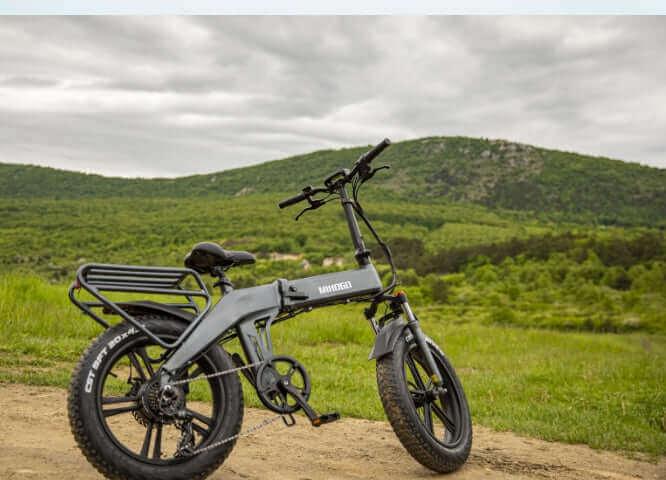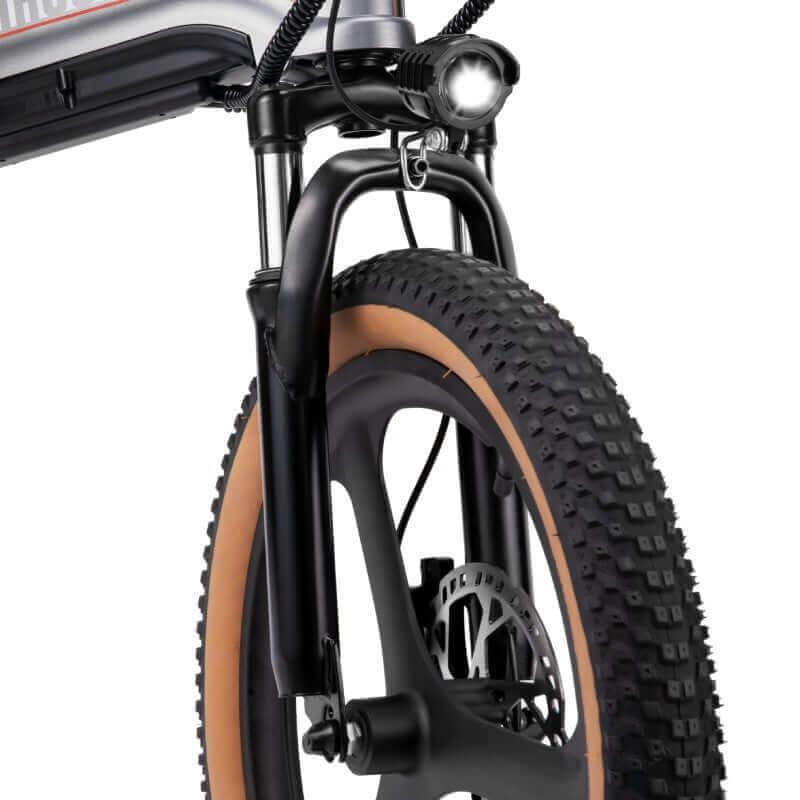The world is transitioning towards sustainable modes of transportation, and e-bikes are emerging as a key player in this green revolution. Let's dive deep into the world of e-bikes, exploring their environmental impact, fitness benefits, and rising popularity.
Introduction to E-Bikes
An e-bike, short for electric bicycle, is an eco-friendly vehicle powered by an electric motor. What sets it apart from a typical motorcycle is its ability to switch between human biking and electric power. This dual mode offers an incredible blend of exercise and convenience, making e-bikes an attractive option for many.
The Environmental Impact of E-Bikes
A Comparison: E-Bikes vs Traditional Transport
E-bikes dramatically reduce our carbon footprint compared to traditional forms of transportation like cars. How much pollution do cars produce? The average car emits about 4.6 metric tons of carbon dioxide per year. Comparatively, the carbon footprint of e-bikes is nearly negligible.
E-Bikes and Carbon Footprint
According to radar transportation studies, e-bikes offer substantial environmental benefits over gas-powered vehicles. For every km traveled, the impact of an e-bike on the environment is significantly lower. In fact, a typical motorcycle emits about 20g of CO2 per km, while an e-bike produces virtually none when ridden manually.
Health and Fitness Perks of E-Biking
Heart Health and E-Biking
One might not consider e-biking as physically demanding as regular biking, but it undeniably gives your heart a good workout. To compare, consider the energy expenditure; cycling on a regular bike is similar to running, whereas e-biking equates to brisk walking. For an individual weighing 150 pounds, biking at a speed of 10-14 mph can torch between 430 and 560 calories per hour. On the flip side, e-biking for the same person expends about 280 calories per hour, equivalent to a brisk walk's calorie burn. The overall calorie burn can vary based on factors such as the rider's effort, the load they're carrying, and the selected power setting. Remarkably, you could burn up to 390 calories per hour!
More Miles with E-Bikes
Ownership of an e-bike can act as a catalyst, encouraging more frequent biking. A study involving around 1,800 e-bike owners in North America revealed a significant shift in biking frequency upon acquiring an e-bike. Prior to ownership, a mere 55% of respondents reported biking daily or weekly. Post-acquisition, this statistic surged to 91%. Even more astonishing, 94% of respondents who didn't bike before started to do so daily or weekly once they bought an e-bike. For many, e-bikes have not replaced their traditional bikes, but rather their cars. The study discovered e-bike owners replaced 46% of their car-based commuting and 30% of their errands with e-biking. This lifestyle adjustment can substantially bolster fitness without compromising the convenience of personal transportation.
E-Biking: A Path to Better Health
Starting an e-biking regimen can bring about notable health improvements, particularly for those previously leading a sedentary lifestyle. A study conducted by the University of Colorado provided e-bikes to inactive individuals, asking them to commit to a minimum of 40 minutes of riding thrice a week. The results were promising: participants willingly exceeded the minimum requirement, experienced fitness improvement, better managed their blood sugar levels, and even shed some body fat within a month.
Enjoyment and Fitness: The E-Biking Experience
E-biking offers a unique blend of low-intensity fitness and fun. Riding an e-bike on one of its lower power settings allows the heart rate to stabilize into a rhythm that builds endurance, while also enabling you to cover more distance than you would on a conventional bike. This combination of fitness and fun can be a significant motivator, encouraging individuals to get on their e-bikes more frequently and boosting their overall fitness and health.
The Rising Popularity of E-Bikes
Green E-Bike: A Sustainable Choice
The appeal of green bicycles is skyrocketing, as more individuals understand their eco and health benefits. From being a niche product, e-bikes are quickly becoming mainstream.
Bicycle Usage Statistics By Country
Bicycle usage statistics indicate a growing trend towards cycling for transportation. Countries like the Netherlands, Denmark, and Germany lead in terms of e-bike adoption.
According to data from the European Cyclists' Federation, countries like the Netherlands, Denmark, and Germany are indeed front-runners in e-bike adoption. These countries have seen significant growth in bicycle usage for transportation due to strong governmental policies promoting cycling, comprehensive cycling infrastructure, and increased public awareness regarding the environmental and health benefits of cycling.
Frequently Asked Questions
1. Do e-bikes actually contribute to fitness?
Absolutely! E-bikes can offer a moderate workout, enhancing cardiovascular health and muscle strength.
2. Are e-bikes truly better for the environment than cars?
Yes, e-bikes emit far fewer greenhouse gases than cars, making them a more eco-friendly option.
3. How much CO2 does an e-bike emit compared to a car?
While e-bikes do require electricity, their CO2 emissions are still much lower than those of cars.
4. Can e-bikes help in reducing traffic congestion?
Indeed! More people using e-bikes means fewer cars on the road, leading to less traffic.
5. Are e-bikes safe to ride?
E-bikes are as safe as conventional bicycles. Always wearing a helmet and following traffic rules can ensure a safe ride.








